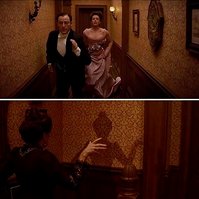Underrated
September 13, 2017Feeling the need to express my love to Donald McAlpine.
Now, the title of this blog is “Underrated”, which may not entirely be fair. Considering he has been nominated for an academy award, along with being in the ASC AND ACS, and plenty of other honors and accolades.
I consider him underrated because of how much he has achieved in correlation to the amount of times I’ve heard people talk about him or his work. He is rarely on lists of the greatest, rarely asked to speak about his work, rarely the “talk of the town”. However, his distinct visual style that is still flexible to the story, a scope of work that varies drastically (genre/director/budget/storyline), all this he accomplishes with NOT being a jerk.
I have a ton of respect for everything this man has been recorded saying. Notably, this answer from an ASC interview:
What has been your most satisfying moment on a project?
There is a point in every project where you and the director find your relationship and connection. At that time, you realize what the director needs from you and what you can get from him. From that point on, the movie is just hard work, but we love it.
This is something every cinematographer should talk about. The moment after prep, storyboards, look books, lighting plots, production logistics, everything. The moment you look over to the director who is staring silently at the monitor and you realize you took what was in their brain and made it real, made it visually tangible. That is the moment that makes every part of the job worth it, when your technical expertise, crew management, your EYE actually accomplish the creative objective and when you can start really telling the story.
As a DP who wants to shoot many things, horror, action, drama, comedy, I revel in one other line from this interview:
“A genre is little more than a frame to contain a story.”
Most of what he says and believes comes back to the same thread. The story. Which is what everything should come back to.
You can see this attitude reflect in his work. The lighting he chooses, the shots, are so targeted to the story and the emotion of the story rather than just being gorgeous (which, they also are). Attached are some of my favorite moments cinematography-wise:
Peter Pan (2003) Directed by P.J. Hogan where the blue/orange contrast is some of the most beautiful I’ve seen, the visual effects, mattes, compositing, everything still hold up 15 years late, and the shot selection is not only innovative, but lends to the characters it’s portraying. Seriously, check this movie out if you haven’t.
Romeo & Juliet (1996) Directed by Baz Luhrmann one of the most interesting movies to ever be made. Again, blue/orange contrast, unafraid to push the limits of light and camera, gorgeous and story-dependent composition. Whatever your qualm with this movie (and many people have many for some reason) you can buzz off. Rarely have I seen a movie contain such complete and dynamic visual composition.
Mrs. Doubtfire (1993) Directed by Chris Columbus an iconic classic that is unbelievably enhanced by Alpine. He sets up shots that are close at the right moments, catching the emotion through the hilarity, as well as knowing when to be wide and static - letting Robin Williams take up the space he needs to create a character we all know and love. I attached the only image that matters.
The drastic differences in these three movies with three very different directors and some fantastic actors prove Alpine’s ability to innovate, do something new, and most importantly shoot the hell out of a story.
















